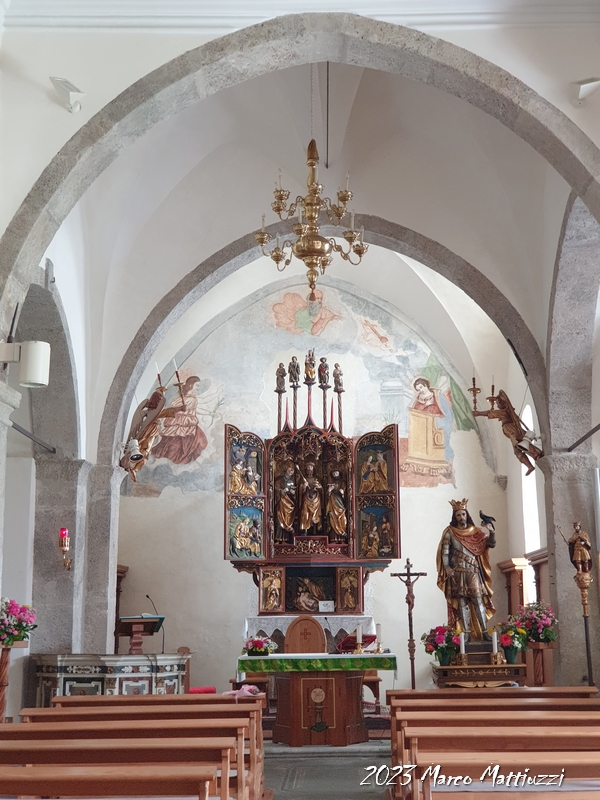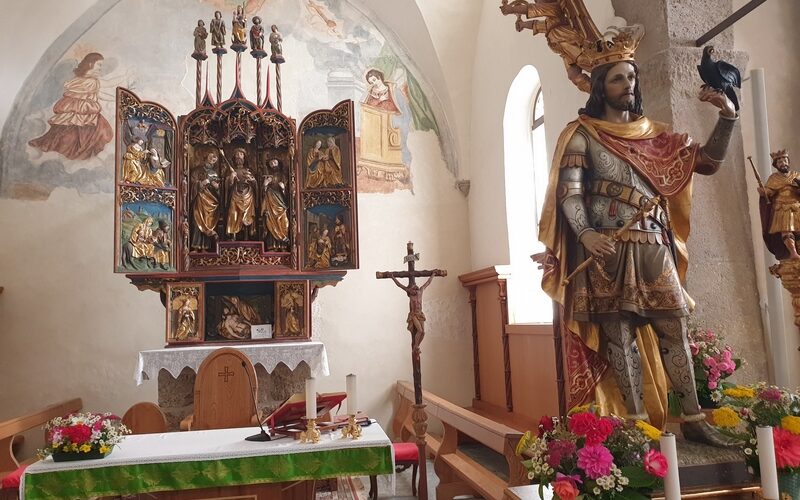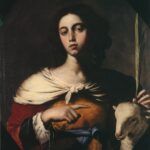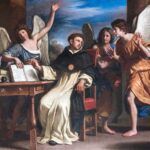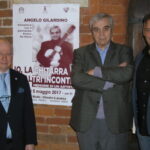Art, in its many forms, often serves as the spokesperson for stories passed down through generations, narrating the lives of heroes, kings, and saints. This is certainly the case with Saint Oswald of Northumbria, the saintly king who ruled England in the 7th century, whose life and deeds have become legendary.
In the small village of Sauris di Sotto, in the Italian region of Friuli-Venezia Giulia, stands a church dedicated to Saint Oswald. The photographs accompanying this article reveal the captivating simplicity of this place of worship, and within it lies an iconic depiction of Saint Oswald carrying with him a tangible reminder of the stories that surround his life: a raven holding a wedding ring in its beak.
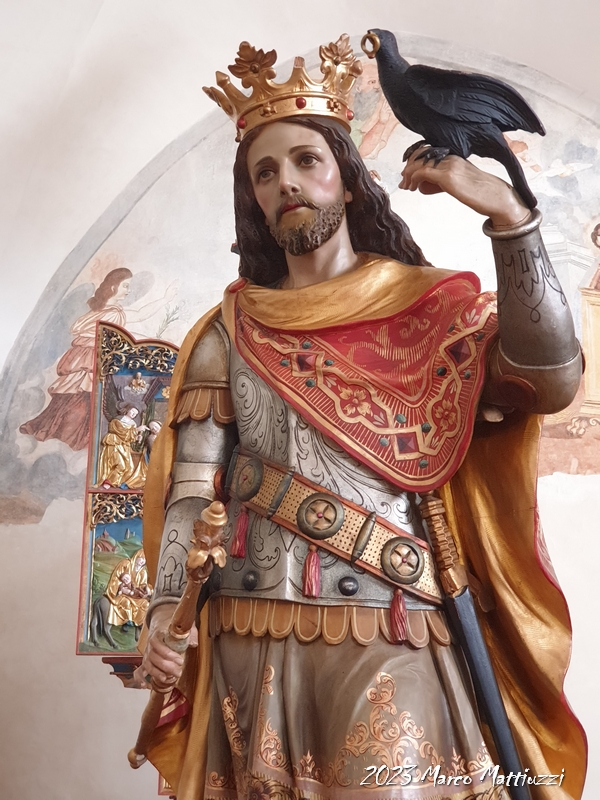
This tale symbolizes fidelity and love, represented by the wedding ring, which Oswald sought to promote among his subjects. The raven and the ring, united in the artistic representation at the church of Sauris di Sotto, are a metaphor for Oswald’s evangelizing work: just as the ring falls into the well and transforms the water into a source of miracles, so did Oswald’s preaching bring the light of the Gospel to a kingdom still shrouded in the darkness of paganism.
The image of Saint Oswald depicted in this church offers a fascinating parallel to the character’s portrayal in the television series “The Last Kingdom”. While the series focuses on the struggle between Anglo-Saxon kings and Viking invaders, the figure of Saint Oswald emerges as an emblem of spiritual resilience and unwavering faith. His devotion to God and his determination to bring the Gospel’s message to his people resonate through the centuries, from the dark heart of the Middle Ages to the present day.
In the silence of Sauris di Sotto, the church of Saint Oswald stands as a testament to a bygone era and the stories that were part of it. Saint Oswald, with the raven and the ring, reminds us that even in the darkest circumstances, faith can triumph and the light of the Gospel can shine brightly. The legends surrounding his life continue to inspire, and his figure, in both folk tales and sacred art, remains a powerful testimony to the power of faith and love.
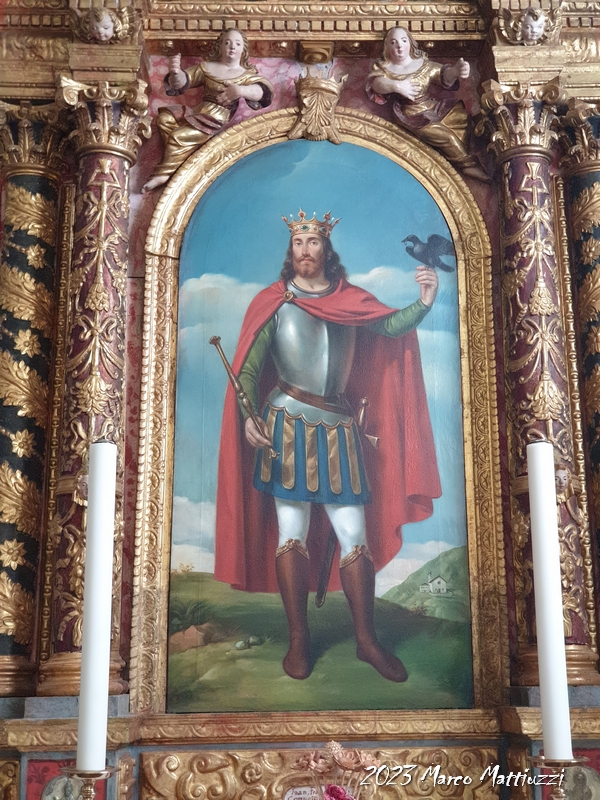
During his reign, Oswald stood out for his commitment to evangelizing his people, promoting the work of Saint Aidan of Lindisfarne. He died in battle against the Mercians in 642, and his death made him a martyr. He was canonized, and his sanctity is recognized by both the Catholic and Anglican Churches.
Saint Oswald is often depicted with a crown, symbolizing his royal authority, and with a cross, referring to his Christian faith and his role as an evangelist. In some iconography, Oswald is seen holding a bird, in memory of a miracle attributed to the saint: it is said that while dining with Saint Aidan, a raven stole a piece of bread. Oswald chased after it and, upon catching it, instead of killing it, he released it, turning the raven into a sign of his holiness and mercy.
“The Last Kingdom”, a British television series based on the novels by Bernard Cornwell, features a character inspired by Saint Oswald: Oswald, portrayed by James Northcote. Although not perfectly faithful to the historical figure, the character shares with Saint Oswald the Christian faith, noble birth, and heroic death in battle.
In “The Last Kingdom”, Oswald serves as a bridge between the two conflicting worlds: that of the pagan Danes, represented by the protagonist Uhtred, and that of the Christian Saxons, to which Oswald belongs. His character reflects the tension between faith and power, between spirituality and earthly duties, that characterized the life of Saint Oswald.
Overall, Saint Oswald is a fascinating example of how a historical figure can be reworked and reinterpreted in art and narrative, while still maintaining its relevance and allure. Both in real life and in “The Last Kingdom”, Oswald represents a figure of mediation between different worlds and cultures, a role that reflects the complexity of his time and continues to resonate in ours.
